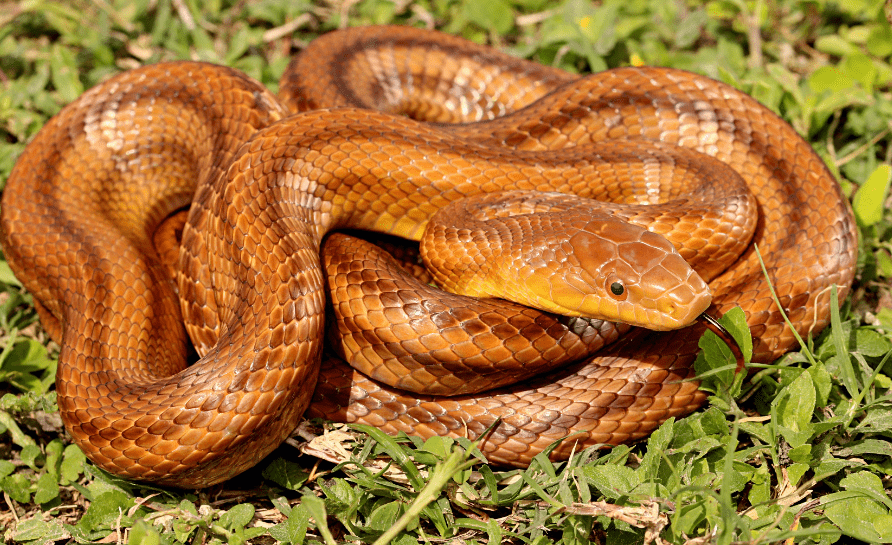
Description
Scientific Name: Pantherophis sp.
Lifespan: Approximately 10–15 years in the wild and possibly 20 years in captivity
Along with kingsnakes, milk snakes, vine snakes, and indigo snakes, rats are members of the Colubridae family’s subfamily Colubrinae. The typical rat snake is a medium-sized snake that ranges in length from 42 to 72 inches (106.7 to 183 cm). The typical diameter of a snake is 1.5 inches (3.8 cm) at its widest point. Common rat snakes have a muscular, thin body with a wedge-shaped head and are covered in keeled scales. There are typically 8 supralabials, about 220 ventral scales, and 70 to 100 subcaudals in rat snakes. The common rat snake has a split anal plate (scale).
Native Region/Habitat
Rat snakes are found from New England through Florida in the south, to Texas and Nebraska in the west, and then back north to southern Wisconsin. Because each subspecies favours a somewhat distinct habitat, common rat snakes can be found in a wide range of habitats. Some of these habitats cross one other’s paths. Since they are skilled climbers, common rat snakes will spend a lot of time in trees.
Behavior
Typically wary, common rat snakes will try to avoid confrontation. These snakes typically freeze and don’t move when they are seen and in danger. Some adults will make an effort to defend themselves. In order to make dead leaves rattle, they will coil their bodies and vibrate their tails. The snakes will bite if they are provoked further. When picked up, rat snakes create a pungent odour that they will release on the predator. The snake will next use its tail to disperse the musk all throughout. The musk serves as a dissuader. Some of the rat snake subspecies are more aggressive than others.

Care as a Pet/In Captivity
Enclosure
A cage that is roughly three feet long by two feet deep is required for an adult rat snake. Given how busy they may be, rat snakes will have plenty of room to roam about on this much floor space.
Humidity
A water dish inside the vivarium should be enough to provide adequate humidity. The air will remain absolutely humid since some of the water will evaporation. Check the humidity levels in the vivarium housing your rat snake with a hygrometer. Aim for a moisture content of between 35% and 50%, which is about usual for homes.
Use a larger water dish or place it towards the heated end to promote humidity. Increase the airflow in the enclosure or use a smaller water dish to reduce humidity. Rat snakes benefit from a little bit more humidity (60–70%) during shed. This can be accomplished by including a humidity box filled with moist sphagnum moss.
Temperature
At one of the enclosure’s ends, place the heat lamp. Your snake will be able to regulate its body heat more effectively thanks to the resulting temperature gradient. The cool end should be around 75 degrees Fahrenheit, with the hotter end being 85 degrees. The temperature can be controlled with a thermostat. Rat snakes can thrive without full-spectrum UVA/UVB lights. Their enclosures, though, ought to be lit up during the day and dark at night.
You should have plenty of sunlight if you put your rat snake’s habitat in a room that is sunny. If a light source is included in the vivarium, make sure to turn it off at night. Otherwise, your snake can tense up.
Diet
Rat snakes thrive in captivity when fed a diet of mice and rats. Your rat snake gets all the nourishment it needs from rodents to grow. Most pet shops and specialized online retailers sell feeder mice and rats.
Despite the fact that you can feed live, we advise feeding frozen-thawed. This entails buying frozen, pre-killed mice and rats that must be defrosted before feeding. Your snake could sustain damage if live mice or rodents bite it in self-defense.
Table





